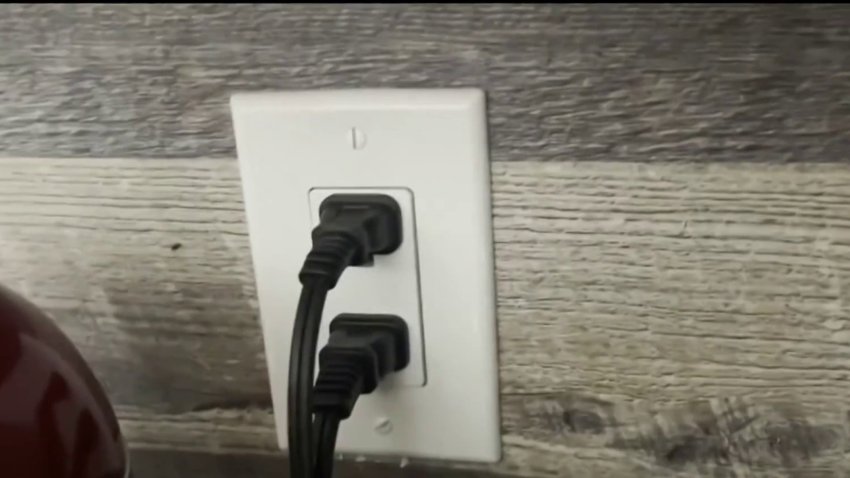If lights do go out, it would be the first time since August of 2020. NBC 7’s Dana Williams has the story.
A relentless heat wave is sending energy use soaring in California, which could prompt rotating power outages if the state falls short of its power supply.
California Independent System Operators (CAISO), which runs the state's electrical grid, said rolling blackouts were a strong possibility on Tuesday and Wednesday as the state's electrical load could surpass the highest demand the state's ever seen.
Stream San Diego News for free, 24/7, wherever you are with NBC 7.
In order to avoid blackouts, the CAISO issued a Flex Alert to call on Californians to voluntarily conserve energy. But if that and other measures the energy operator is taking to handle the surge fail, the last resort would be issuing a call to local utilities to shed their load -- which means cutting power to customers.
San Diego Gas & Electric has a system in place for that possibility. Here's what to know.
Get top local San Diego stories delivered to you every morning with our News Headlines newsletter.
What will happen if rolling blackouts begin in San Diego County?
First, SDG&E will inform customers that rotating outages are imminent by issuing alerts through the media, social media and phone calls.
Local
Then, SDG&E will use a pre-determined list to cut power to the necessary amount of San Diego customers, bits at a time and starting from the top, until the rotating outages are no longer needed.
"So California ISO may call us and ask for a certain amount of load to be dropped and we'll work our way down that list of circuits and we will basically open a switch and drop those customers for up to an hour," SDG&E Chief Safety Officer Kevin Geraghty said. If the grid hasn't recovered by the end of that hour, "We may have to go to another hour, but it would be a different set of customers."
The utility reassures that the outages won't last for more than an hour for any individual customer.
How to determine my order in SDG&E's rotating power outages
To determine if or when you'll be affected by rotating outages, you'll first need to determine your circuit number. To find your circuit number, check your SDG&E bill or log in to your account on the SDG&E website. Circuit numbers are listed in the bill section under "detail of current charges."
Then, find your circuit number on this list of circuits.
If rotating outages begin, SDG&E will start at the top of this list and work their way down, in order, until power outages are no longer necessary, Geraghty said. It is likely six or so lines of circuits will be affected at a time for up to an hour before the utility moves on to the next half-dozen communities.

How was the list order created?
The list was required after the Western Energy Crisis in the 2000s and is filed with the state's public utility commission.
The same list has been used since then, but each time there are rotating outages, customers affected are moved to the bottom of the list.
The last time there were rotating outages was in August 2020, so communities affected then won't have their power cut this time -- unless by some unlikelihood SDG&E cycles through the entire list.
There are customers that are exempt from the list, like hospitals, emergency operators, police stations, fire stations, cool zones and other essential services, Geraghty said.
What can I do to prevent blackouts?
A Flex Alert was issued again Tuesday from 4 p.m. to 9 p.m. to urge customers to voluntarily conserve energy to avoid rolling blackouts. Utilize the following conservation tips:
- Turning off unnecessary lights.
- Using major appliances before 3 p.m. and after 10 p.m.
- Setting air conditioner thermostats to 78 degrees or higher.
- Use fans and keep drapes drawn.
"I believe we can get through this event but what we really need from everybody is pleased between 4 and 10 p.m.," Geraghty said. "If you have batteries, power walls, right, we want you to charge those, of course, but do it after 10 o'clock. Charge your car after 10 o'clock. Shut your pool pump off until 10 o'clock. And of course, the simplest and easiest one is really [to] raise your thermostat a couple degrees."
Geraghty also advised people to pre-cool their homes by closing their blinds to block out the sun, especially in the late afternoon.
When did rotating outages last happen?
Several hundred thousand Californians lost power in rolling blackouts in August 2020 amid hot weather. The state avoided a similar scenario last summer. Previously, the state ordered rolling outages during an energy crisis in 2001. Blackouts occurred several times from January to May, including one that affected more than 1.5 million customers in March. The cause was a combination of energy shortages and market manipulation by energy wholesalers, infamously including Enron Corp., that drove up prices by withholding supplies.



